 With deep sorrow we (at WAP) knew at this moment that a young researcher engaged in the Antarctic campaign at the Indian Maitri Base, was victim of an accident in the Ice shelf.
With deep sorrow we (at WAP) knew at this moment that a young researcher engaged in the Antarctic campaign at the Indian Maitri Base, was victim of an accident in the Ice shelf.
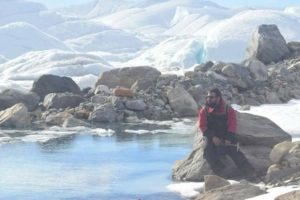 Born on 13th April 1994, Shri. Subhajit Sen did pass away on Tuesday the 27th March 2018 while at Indian convoy route to Maitri Station , Antarctica in service to the Nation.
Born on 13th April 1994, Shri. Subhajit Sen did pass away on Tuesday the 27th March 2018 while at Indian convoy route to Maitri Station , Antarctica in service to the Nation.
He met with an accident during convoy operations at Ice Shelf and suffered a major trauma late evening of 26th March 2018.
He was immediately rushed towards the Expedition Vessel and Doctors joined with medical help around 23:15 hrs (UTC+01). Unfortunately, attempts to revive him went in vain and he bid farewell due to fatal injuries to this mortal world at 00:12 hrs (UTC+01).
The student participant Shri Subhajit Sen, was deputed to Antarctica a member of the short term Team of the 37th Indian Scientific Expedition to Antarctica (ISEA) in November 2017 and was 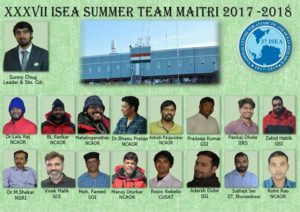 expected to return back home by April 2018. Through a competitive process, he was selected for the expedition based on his research project “Deformation – Fabric in Sub-glacial Till Exposed in Schirmacher Oasis”.
expected to return back home by April 2018. Through a competitive process, he was selected for the expedition based on his research project “Deformation – Fabric in Sub-glacial Till Exposed in Schirmacher Oasis”.
Shri Subhajit Sen was an intelligent young scientist, adorable personality with many facets and an energetic member of the team who would bring smile to many faces, would go an extra mile to help others and would stand by in the hour of need, is no more with us– is the sad comment of the Indian Antarctic Center – Shri Sen will always remain in the hearts of fellow Antarcticans and remembered with fondness. His contributions to Antarctic Sciences will always be admired.
 With profound grief and sorrow we at the Indian Research Base, Maitri Antarctica and at National Centre for Antarctic and Ocean Research, Goa condole the death of Shri Subhajit Sen and pray to God almighty for his soul rests in peace and for strength courage and solace to the family.
With profound grief and sorrow we at the Indian Research Base, Maitri Antarctica and at National Centre for Antarctic and Ocean Research, Goa condole the death of Shri Subhajit Sen and pray to God almighty for his soul rests in peace and for strength courage and solace to the family.
Read more at: http://www.ncaor.gov.in/news

On behalf of the WAP community, sure to interpret the sentiment of the thousands of Hams, Antarctic chasers, Scientific colleagues as well as all the Antarctic followers, worldwide, we send our deepest condolences to the family and to everyone in the NCAOR Department.
His soul rest in peace.
For condolences to family and friends write to condolence.sen@ncaor.gov.in

 Officially opened on 20 March 1968; the US Palmer Research Station (WAP USA-23) on Anvers Island focuses primarily on Antarctic marine biology and zoology.
Officially opened on 20 March 1968; the US Palmer Research Station (WAP USA-23) on Anvers Island focuses primarily on Antarctic marine biology and zoology. States Antarctic stations, as well as Arthur Harbour and the Bismarck Strait beyond. Palmer station webcam at:
States Antarctic stations, as well as Arthur Harbour and the Bismarck Strait beyond. Palmer station webcam at: 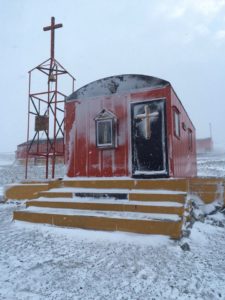 Christianity was first established in Antarctica by Captain Aeneas Mackintosh who erected a cross on Wind Vane Hill in 1916. The first religious service was conducted in Antarctica in 1947 by William Menster with about 2,000 people from different Christian denominations in attendance. Research and whaling stations were erected in the large area of Antarctica in the early 1900s. Since then, several scientists are attending the area especially during summer while a few people stay over during winter. The extended stay in the region can be stressful and challenging for researchers. The Jesuit geophysicists have contributed to the growth of religion in the continent through Antarctica mission work. The religion in Antarctica dates back to the discovery of the continent in 18th century. However, Christianity was the first religious practice in the continent.
Christianity was first established in Antarctica by Captain Aeneas Mackintosh who erected a cross on Wind Vane Hill in 1916. The first religious service was conducted in Antarctica in 1947 by William Menster with about 2,000 people from different Christian denominations in attendance. Research and whaling stations were erected in the large area of Antarctica in the early 1900s. Since then, several scientists are attending the area especially during summer while a few people stay over during winter. The extended stay in the region can be stressful and challenging for researchers. The Jesuit geophysicists have contributed to the growth of religion in the continent through Antarctica mission work. The religion in Antarctica dates back to the discovery of the continent in 18th century. However, Christianity was the first religious practice in the continent.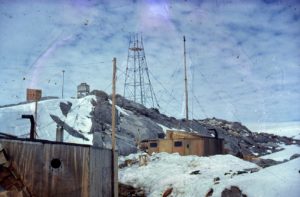
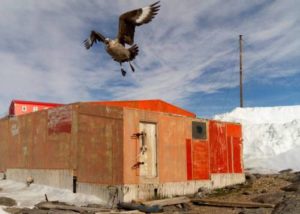
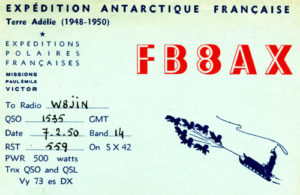 entirely available online. It is an excellent testimony of the daily life conditions in Antarctica in 1950s in which clearly appear FB8AX (René Gros from 7mns10s to 8mns 00s then Mario Marret from 9mns53 to 57s).
entirely available online. It is an excellent testimony of the daily life conditions in Antarctica in 1950s in which clearly appear FB8AX (René Gros from 7mns10s to 8mns 00s then Mario Marret from 9mns53 to 57s).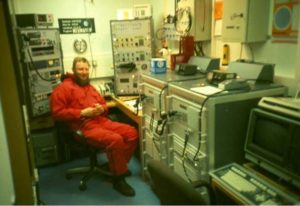 Volker Strecke DL8JDX is a great friend and an Antarctic veteran who did participate to several Antarctic Expeditions from 1988 through 1994.
Volker Strecke DL8JDX is a great friend and an Antarctic veteran who did participate to several Antarctic Expeditions from 1988 through 1994.
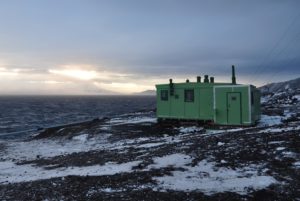 Nestled alongside Scott Base (WAP NZL-Ø1) in Antarctica, is Hillary’s Hut, a small building that’s played a big role in New Zealand’s history. Hillary’s Hut was the first building constructed at Scott Base. It was built by a team led by Sir Edmund Hillary in 1957 and it was from here that Sir Ed later led the historic expedition to the South Pole.
Nestled alongside Scott Base (WAP NZL-Ø1) in Antarctica, is Hillary’s Hut, a small building that’s played a big role in New Zealand’s history. Hillary’s Hut was the first building constructed at Scott Base. It was built by a team led by Sir Edmund Hillary in 1957 and it was from here that Sir Ed later led the historic expedition to the South Pole.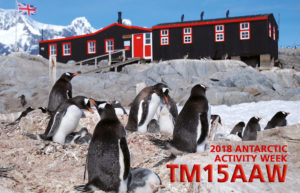 Thanks to F8DVD, always present since the 1st edition of the Antarctic Activity Week, 15 years ago!
Thanks to F8DVD, always present since the 1st edition of the Antarctic Activity Week, 15 years ago!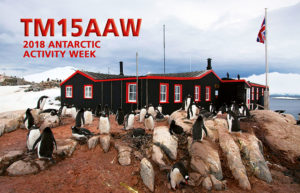 Port Lockroy is situated on Goudier Island in the Palmer Archipelago (64°49’S – 63° 30’W) about 700 miles south of Argentina and Chile. The bay was discovered during Jean-Baptiste Charcot’s French Antarctic expedition in 1904 and was named after Edouard Lockroy, a French politician and Vice President of the Chamber of Deputies, who assisted the explorer in obtaining government funding for his expedition.
Port Lockroy is situated on Goudier Island in the Palmer Archipelago (64°49’S – 63° 30’W) about 700 miles south of Argentina and Chile. The bay was discovered during Jean-Baptiste Charcot’s French Antarctic expedition in 1904 and was named after Edouard Lockroy, a French politician and Vice President of the Chamber of Deputies, who assisted the explorer in obtaining government funding for his expedition.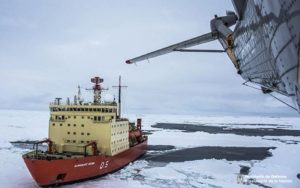 The Argentine Ministry of Defense reports, by the Antarctic joint commander, Marine Commodore Pablo Fal that the crew of the Icebreaker Almirante Irízar rescued five US scientists who were stranded in Antarctica.
The Argentine Ministry of Defense reports, by the Antarctic joint commander, Marine Commodore Pablo Fal that the crew of the Icebreaker Almirante Irízar rescued five US scientists who were stranded in Antarctica.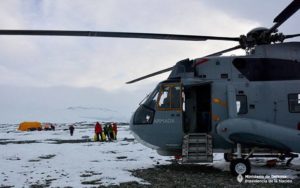 request of the Argentine Foreign Ministry and went to Joinville Island to rescue the scientists.
request of the Argentine Foreign Ministry and went to Joinville Island to rescue the scientists.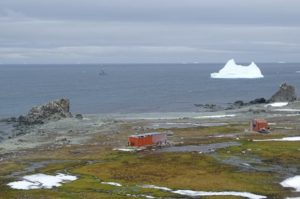 Francisco de Gurruchaga Antarctic Naval Refuge (62°14’03.0″ South, 59°10’02.0″ West), also known as Armonia Refuge or Harmony Haven has been recently referenced with WAP ARG-28 following the activity of Juan Manuel Pereda who did operate from there as LU4CJM/Z from Jan. 8th through 22nd 2017.
Francisco de Gurruchaga Antarctic Naval Refuge (62°14’03.0″ South, 59°10’02.0″ West), also known as Armonia Refuge or Harmony Haven has been recently referenced with WAP ARG-28 following the activity of Juan Manuel Pereda who did operate from there as LU4CJM/Z from Jan. 8th through 22nd 2017.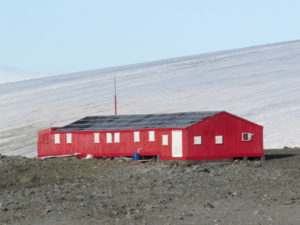 On the hill about 500m from Esperanza is Trinity House, a hut remaining from “Base D”, built by the UK in 1944–45 and closed in 1963. It was transferred to Uruguay in 1997 and is now named Ruperto Elichiribehety Station after the captain of Uruguayan steam trawler Instituto de Pesca No 1, which Shackleton used in his second of three unsuccessful attempts to reach the Elephant Island castaways. The summer-only facility accommodates eight.
On the hill about 500m from Esperanza is Trinity House, a hut remaining from “Base D”, built by the UK in 1944–45 and closed in 1963. It was transferred to Uruguay in 1997 and is now named Ruperto Elichiribehety Station after the captain of Uruguayan steam trawler Instituto de Pesca No 1, which Shackleton used in his second of three unsuccessful attempts to reach the Elephant Island castaways. The summer-only facility accommodates eight.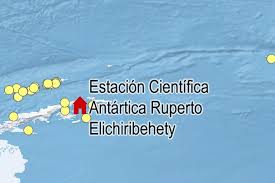
 The commander of a Spanish Navy Rsearch Ship has died in Antarctica after apparently falling overboard.
The commander of a Spanish Navy Rsearch Ship has died in Antarctica after apparently falling overboard.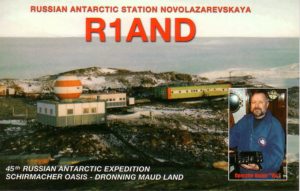 Oleg Sakharov UA1PBA/ZS1ANF/RI1ANF was helpful to understand a bit more, so thanks to him, now the story is more clear.
Oleg Sakharov UA1PBA/ZS1ANF/RI1ANF was helpful to understand a bit more, so thanks to him, now the story is more clear.
 Viktor, the ship’s Communications Officer and Ivan, the ship’s electrician. Their assistance was crucial to what success I was to enjoy.
Viktor, the ship’s Communications Officer and Ivan, the ship’s electrician. Their assistance was crucial to what success I was to enjoy. The next day, Viktor and Ivan assisted me in pulling the tuner and inspecting it. The concern of the Captain was such that we had to provide him with complete assurance that he would not be aware that I was operating the radio. The decision was made to forgo the amplifier and instead try to use it’s built in tuner to produce a matched input to the Pacific Aerials 7.3 meter vertical. A match could not be achieved. I used the ship’s commercial internet service to notify the group of my predicament and then relegated myself to being a tourist only.
The next day, Viktor and Ivan assisted me in pulling the tuner and inspecting it. The concern of the Captain was such that we had to provide him with complete assurance that he would not be aware that I was operating the radio. The decision was made to forgo the amplifier and instead try to use it’s built in tuner to produce a matched input to the Pacific Aerials 7.3 meter vertical. A match could not be achieved. I used the ship’s commercial internet service to notify the group of my predicament and then relegated myself to being a tourist only.